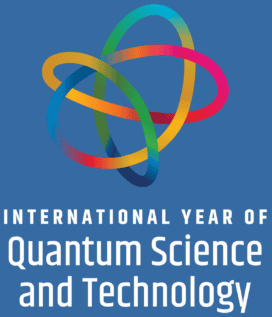Scientists at the Massachusetts Institute of Technology (MIT) in the US have achieved the cleanest demonstration yet of the famous double-slit experiment. Using two single atoms as the slits, they inferred the photon’s path by measuring subtle changes in the atoms’ properties after photon scattering. Their results matched the predictions of quantum theory: interference fringes when no path was observed, two bright spots when it was.
First performed in the 1800s by Thomas Young, the double-slit experiment has been revisited many times. Its setup is simple: send light toward a pair of slits in a screen and watch what happens. Its outcome, however, is anything but. If the light passes through the slits unobserved, as it did in Young’s original experiment, an interference pattern of bright and dark fringes appears, like ripples overlapping in a pond. But if you observe which slit the light goes through, as Albert Einsten proposed in a 1920s “thought experiment” and as other physicists have since demonstrated in the laboratory, the fringes vanish in favour of two bright spots. Hence, whether light acts as a wave (fringes) or a particle (spots) depends on whether anyone observes it. Reality itself seems to shift with the act of looking.
The great Einstein-Bohr debate
Einstein disliked the implications of this, and he and Niels Bohr debated them extensively. According to Einstein, observation only has an effect because it introduces noise. If the slits were mounted on springs, he suggested, their recoil would reveal the photon’s path without destroying the fringes.
Bohr countered that measuring the photon’s recoil precisely enough to reveal its path would blur the slits’ positions and erase interference. For him, this was not a flaw of technology but a law of nature – namely, his own principle of complementarity, which states that quantum systems can show wave-like or particle-like behaviour, but never both at once.
Physicists have performed numerous versions of the experiment since, and each time the results have sided with Bohr. Yet the unavoidable noise in real setups left room for doubt that this counterintuitive rule was truly fundamental.
Atoms as slits
To celebrate the International Year of Quantum Science and Technology, physicists in Wolfgang Ketterle’s group at MIT performed Einstein’s thought experiment directly. They began by cooling more than 10 000 rubidium atoms to near absolute zero and trapping them in a laser-made lattice such that each one acted as an individual scatterer of light. If a faint beam of light was sent through this lattice, a single photon could scatter off an atom.
Since the beam was so faint, the team could collect very little information per experimental cycle. “This was the most difficult part,” says team member Hanzhen Lin, a PhD student at MIT. “We had to repeat the experiment thousands of times to collect enough data.”
In every such experiment, the key was to control how much photon path information the atoms provided. The team did this by adjusting the laser traps to tune the “fuzziness” of the atoms’ position. Tightly trapped atoms had well-defined positions and so, according to Heisenberg’s uncertainty principle, they could not reveal much about the photon’s path. In these experiments, fringes appeared. Loosely trapped atoms, in contrast, had more position uncertainty and were able to move, meaning an atom struck by a photon could carry a trace of that interaction. This faint record was enough to collapse the interference fringes, leaving only spots. Once again, Bohr was right.
While Lin acknowledges that theirs is not the first experiment to measure scattered light from trapped atoms, he says it is the first to repeat the measurements after the traps were removed, while the atoms floated freely. This went further than Einstein’s spring-mounted slit idea, and (since the results did not change) eliminated the possibility that the traps were interfering with the observation.
“I think this is a beautiful experiment and a testament to how far our experimental control has come,” says Thomas Hird, a physicist who studies atom-light interactions at the University of Birmingham, UK, and was not involved in the research. “This probably far surpasses what Einstein could have imagined possible.”
The MIT team now wants to observe what happens when there are two atoms per site in the lattice instead of one. “The interactions between the atoms at each site may give us interesting results,” Lin says.
The team describes the experiment in Physical Review Letters.
This article forms part of Physics World‘s contribution to the 2025 International Year of Quantum Science and Technology (IYQ), which aims to raise global awareness of quantum physics and its applications.
Stayed tuned to Physics World and our international partners throughout the next 12 months for more coverage of the IYQ.
The post Famous double-slit experiment gets its cleanest test yet appeared first on Physics World.


